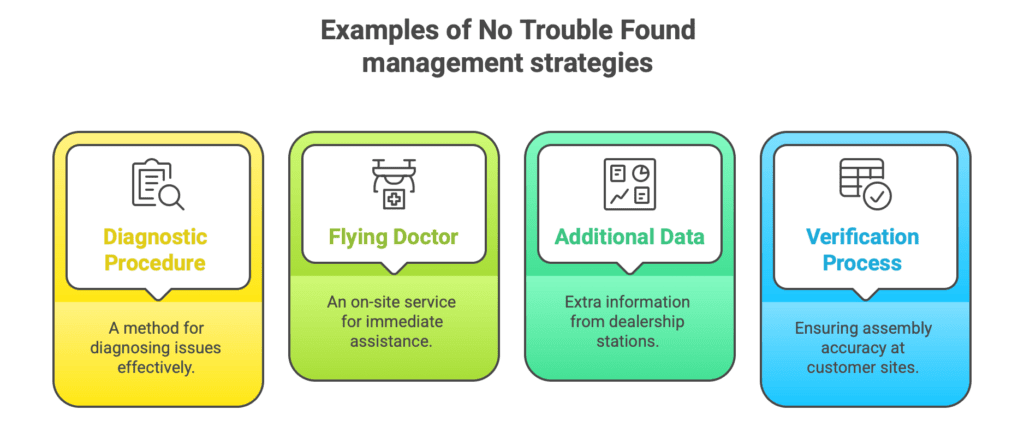No Trouble Found (NTF) is the result of a qualitative analysis stating that the problem has not been confirmed. If the Pareto analysis shows that it’s the main contributor to warranty returns, then it’s worth implementing strategies that will reduce its occurrence.
Why? Because even if the customer approves our analyses with a No Trouble Found result, 50% of the costs will be covered by the supplier.
For this reason, it is good to know the strategies to reduce costs resulting from an excessive amount of warranty returns with this status.

Diagnostic Procedure – A filter for No Trouble Found
This is a great strategy for reducing claimed warranty returns with NTF status. It’s a joint checklist arrangement between the customer’s engineering department and the supplier. The diagnostic or production plant representative performs the individual diagnostic steps. Why? To confirm that this is a sub-supplier component issue.
In this way, some clients (for example, Stellantis-FCA) are introducing new criteria for financial liability for such parts. In practice, this means that client will not charge the supplier for any costs related to NTF.
Stellantis-PSA also makes it possible to jointly define the procedure relating to the elimination of NTF returns. It’s not defined as a “diagnostic procedure”. Nevertheless, the final benefits are the same.
Flying Doctors launch strategy
The Flying Doctor (Man in the Van) strategy usually is a long term activity. By employing a specialist in such a position, the plant has the opportunity to implement several tactical strategies for reducing NTF. More information is presented in a separate article.
Additional evidence collected by dealerships
One tactical action I used when managing warranty returns was obtaining additional evidence from the dealer. The activity involves agreeing with the customer’s representative, assigned to this activity, that the dealer station will present additional information before sending the complained part to the supplier.
The complaint areas for which we can reduce the number of No Trouble Found occurrences are:
No Trouble Found for noise complaints
In this case, the dealer must send an additional video showing the type of noise.It would be best if we also received information about the speed, tire type, and the car version in which you detected the problem.
Why? We may use such data in the future to build an information base, enabling us to establish a correlation between a given type of defect and the conditions under which it occurred.
Car “drift” notifications
Such problems concern components related to the suspension and vehicle steering. One step the dealer can take before returning the suspect part to the supplier is to verify the wheel alignment. We can carry this out in two steps:
- Step 1: Checking the wheel alignment at the beginning of the analysis.
- Step 2: Wheel alignment recalibration in case of deviation and verifying whether the problem is still present.
Let the data speak
Another strategy to analyze with the customer is verifying the assembly process at the customer’s site.
This scenario is likely where the end customer doesn’t find a problem after obtaining part of the NTF. Remember that the dealer replaces this part. This may mean that the problem is originally related to an incorrect part assembly at the car manufacturer.
Therefore, as suppliers, we should conduct a joint analysis with the customer’s representative in this area. It should start from the incoming warehouse itself, through sequencing (optional), and end at the assembly line.
- The way we handle our component.
- Sequence of the component assembly. For example, the steering column for the dashboard or seats to the car body.
- Checking the nominal values for the torque and angle data.
By implementing these strategies, suppliers can significantly reduce the occurrence of No Trouble Found in warranty returns, leading to cost savings and improved customer satisfaction.
Download our free ebook Automotive Warranty Management – Practical Guideline for Suppliers Dariusz Kowalczyk
Dariusz Kowalczyk


